- News
- Reviews
- Bikes
- Accessories
- Accessories - misc
- Computer mounts
- Bags
- Bar ends
- Bike bags & cases
- Bottle cages
- Bottles
- Cameras
- Car racks
- Child seats
- Computers
- Glasses
- GPS units
- Helmets
- Lights - front
- Lights - rear
- Lights - sets
- Locks
- Mirrors
- Mudguards
- Racks
- Pumps & CO2 inflators
- Puncture kits
- Reflectives
- Smart watches
- Stands and racks
- Trailers
- Clothing
- Components
- Bar tape & grips
- Bottom brackets
- Brake & gear cables
- Brake & STI levers
- Brake pads & spares
- Brakes
- Cassettes & freewheels
- Chains
- Chainsets & chainrings
- Derailleurs - front
- Derailleurs - rear
- Forks
- Gear levers & shifters
- Groupsets
- Handlebars & extensions
- Headsets
- Hubs
- Inner tubes
- Pedals
- Quick releases & skewers
- Saddles
- Seatposts
- Stems
- Wheels
- Tyres
- Health, fitness and nutrition
- Tools and workshop
- Miscellaneous
- Cross country mountain bikes
- Tubeless valves
- Buyers Guides
- Features
- Forum
- Recommends
- Podcast
review
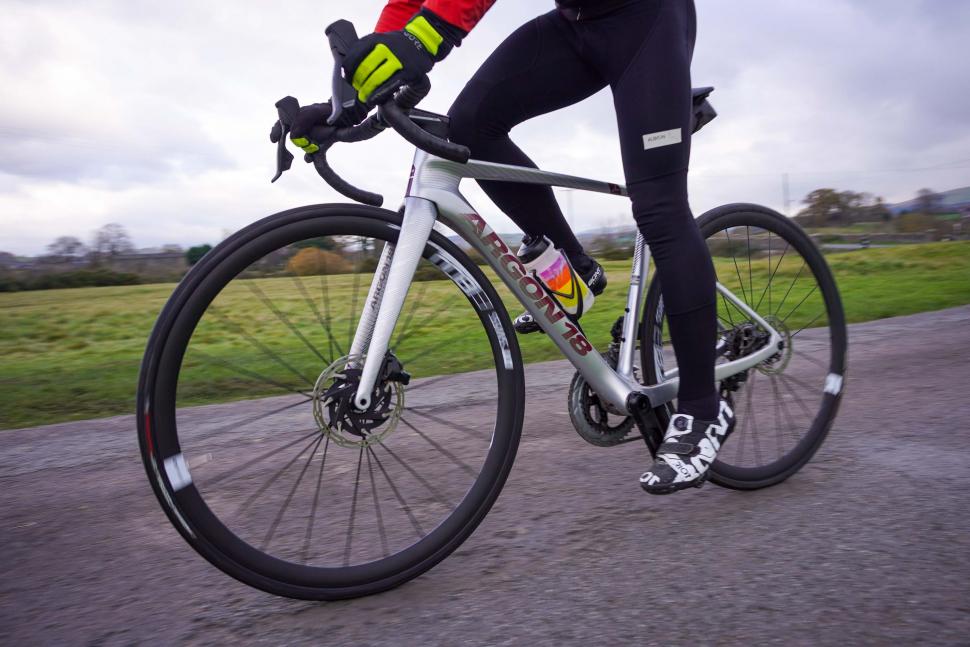 2022 Argon 18 Sum - riding 2.jpg
2022 Argon 18 Sum - riding 2.jpg£5,399.00
VERDICT:
A superbly confident, fast and comfortable bike, but a question mark on the pricing...
Comfortable ride
Confident downhill
Value – sum of its parts is less than the full build cost
Press-fit BB won’t please all
Mech hanger attachment
Weight:
8,150g
Contact:
At road.cc every product is thoroughly tested for as long as it takes to get a proper insight into how well it works. Our reviewers are experienced cyclists that we trust to be objective. While we strive to ensure that opinions expressed are backed up by facts, reviews are by their nature an informed opinion, not a definitive verdict. We don't intentionally try to break anything (except locks) but we do try to look for weak points in any design. The overall score is not just an average of the other scores: it reflects both a product's function and value – with value determined by how a product compares with items of similar spec, quality, and price.
What the road.cc scores meanGood scores are more common than bad, because fortunately good products are more common than bad.
- Exceptional
- Excellent
- Very Good
- Good
- Quite good
- Average
- Not so good
- Poor
- Bad
- Appalling
The Argon 18 Sum is the Canadian brand's new do-it-all lightweight aero road bike that it claims will get you ahead on the climbs, keep you there on the flats, and power you through the sprints. It provides impressive performance, with comfort that belies its looks and sharp handling, but something doesn't add up with the pricing and the sum of its parts.
Note: Argon 18 says the Sum will be available to buy in spring 2023.
With the Sum, Argon 18 claims to combine the lightweight performance of its Gallium Pro with the aerodynamic benefits of its Nitrogen, both of which are set to be phased out. The form is similar to others, with dropped seatstays and a slim profiled main triangle designed to accept fully internal cable routing.
If you're interested in this sort of machine, check out our Best Aero Road Bikes buyer's guide.
The frameset is available in two versions: an upper-level Pro with a 'Pro Level Layup' composite construction, and an 'Elite Level Layup', as on the Sum that we have to test. The weight of each version differs slightly, with the Pro being slightly lighter, 890g vs 850g for a medium size.
The Sum we're testing is the Rival AXS model, which costs £5,399 and weighs 8.14kg without pedals. The weight isn't exceptional, but the components used indicate that there are numerous ways to reduce it if you wished to.
The ride
When I first took the bike out of the box, the first thing I noticed was the tyres, and how narrow they were: 25mm tyres on 20mm ID rims don't suggest a comfortable ride. How could I be so wrong? Definitely a case of appearances being deceptive.
The rear was impressive in how well it smoothed things out while riding, even with inner tubes and at pressures higher than I would normally use on a tubeless setup (90psi vs 70psi). It isn't a completely magical carpet ride, but for a race-orientated bike it is extremely impressive.
The weight isn't anything to write home about, but the bike manages to convey a sense of urgency while climbing. The wheels on our test bike aren't the ones it will be shipped with, but they appear to demonstrate the bike's capability well, with very little lateral flex, which helps provide a better understanding of the frame's potential.
Cornering and descending are highlights, and with a few drier days to really test and enjoy the handling, it is a stable ride that provides confidence on the faster downhills.
The more I rode the Sum, the bigger my smile became, as it continued to deliver in virtually every area and on every ride that I tested it on. It feels sharp and smooth, and it encourages you to push harder, resulting in a speedier ride.
That said, I would like to have been able to test it with a fully tubeless setup and see what difference increasing the tyre width to 28mm could have made, especially on our typical British roads.
The 'Argon Fit System', as Argon 18 refers to its geometry, is designed to provide consistent performance and handling for all riders. The head tube angle for the size small frame on test is 72.1 degrees, the seat tube angle is 74 degrees, and the reach is 389mm. Those are comparable to the Specialized Tarmac, which is likely the major rival – 72.5 degrees, 74 degrees, 383mm – with minor variances visible across all sizes.
Fit preference can vary from person to person, and I found that the size of the bike I tested was ideal for my 168cm, height and 56cm inseam. That isn't what the Argon 18 size chart would suggest, though, with the XS frame size recommended for riders up to 175cm and with a 79cm inseam. The seatpost fitted well within the minimum and maximum guidelines, so I wouldn't depend too heavily on the size guide.
Frame
The Sum frame has lowered seatstays, a sculptured seat tube, and a head tube that flows into the down tube, giving it a very similar look to rival models.
The hour-glass head tube is different to most, but still allows the frame to accommodate the FSA ACR headset system and internal cable routing. Although the cockpit is entirely internally routed, the choice of a conventional handlebar as opposed to an all-in-one bar and stem combo makes for easier swapping if something doesn't suit.
Argon 18 has also specified its 3D headset system, which allows the stack height to be adjusted in a different way to traditional round spacers, and, Argon 18 claims, increases stiffness.
The system uses an integrated section, essentially taking the place of a headset top cap, in a choice of three sizes: 0mm as fitted, 10mm or 20mm.
You need to choose the height before routing internal cables, although there is still the option to increase the handlebar height as the FSA ACR headset system has split headset spacers – assuming there is sufficient steerer tube length remaining.
All Argon 18 Sum and Sum Pro builds use SRAM AXS groupsets, but they can accommodate Shimano Di2 or a mechanical groupset if you want to switch. Or you can just buy the frameset, which might be the best option for many in terms of value, as I shall get on to later.
The seatpost clamp is hidden and accessed under the top tube, but it's simple to use and remained secure throughout testing with no movement or noise. The seatpost itself is slim, with a D-shaped design, and the top tube that holds it in place is barely wider, giving it a very sleek appearance.
The test bike is equipped with 25mm tyres, but Argon 18 claims that 32mm tyres can fit – in fact it says 'Max tire size 30c (32mm). This is less than some, but I believe it is adequate for the type of riding the bike is intended for.
A press-fit BB86 bottom bracket is unlikely to appeal to everyone, and many riders might prefer a threaded option to make BB changes easier.
Another small but frustrating feature is that the rear derailleur hanger is held in place by a tiny bolt. It feels secure with the axle in place, but there is a lot of movement with the wheel out, and I would be especially careful when removing or refitting a wheel to avoid it breaking off.
Groupset
Both Sum builds feature SRAM AXS 12-speed groupsets, Rival on this Elite level model and Force on the Pro.
With a 48/35-tooth chainset and a 10-30 cassette, it has a wide range that I found adequate for steeper climbs of up to 25%. The SRAM Rival setup can accept a larger 10-36 cassette if desired, whereas the Force version is limited to a 33-tooth maximum.
Shifting performance is adequate but not exceptional; compared to Shimano Di2, I found it to be a little slower and noisier, both while shifting and during normal riding. The Rival shifters require a little more effort than the Force or Red AXS versions, but this is something you can adjust to. There are some advantages, and overall I find the shifting style to be very intuitive, with a simple app connection where adjustments can be made if wanted.
The SRAM Rival brakes are impressive, providing plenty of power along with good feel and modulation, and very little noise in the wet or when riding out of the saddle, which may suggest good fork and frame stiffness.
The only thing I question is the use of a 140mm rear disc, as there is little real benefit to using a smaller rotor size, and I think more riders would benefit from a 160mm on both front and rear.
Finishing kit
As I said earlier, Argon 18's decision not to have a bespoke integrated cockpit setup makes it easier to swap out the handlebar if it doesn't suit. It's an alloy FSA Energy SCR compact, with a comfortable flattened ergonomic shape on the top, and enough space for computer, light or other mounts on either side of the stem.
On all widths, the compact bar has a 123mm drop, 78mm reach, and 4 degrees of flare. SCR stands for Semi-Integrated Cable Routing, which completely conceals the brake cables through the handlebar, stem, and frame.
I found the Argon 18 handlebar tape to be sufficiently grippy in all weather conditions, but it is quite thin and one area where front end comfort could be improved easily and inexpensively. Our guide to the best bar tapes has some you should consider if you don't have a favourite.
The Selle Repente Quasar saddle is one that I tested as a standalone product here on road.cc and found comfortable. The overall shape is similar to that of a Specialized Power, with a short overall length and wide rear.
Wheels & tyres
The Argon 18 Sum comes as standard with a Vision Team 30 wheelset and Vittoria Rubino Pro TLR 700x25 tyres, but our test bike came with DT Swiss E1800s. These have the same 30mm rim depth as the Visions and are a similar weight, with the Visions a claimed 1,900g and the DT Swiss a claimed 1,800g. Neither are particularly light wheelsets, so this is one area where you could save quite a bit of weight.
The wheels lack the immediate acceleration of a lighter set, but they have felt stiff and do not detract from the overall ride experience and confidence that the frameset inspires. Although I can't provide feedback on the Vision Team 30 wheels, an upgrade to a lighter set would undoubtedly make a noticeable improvement.
As well as the wheels being different to the standard spec, our test bike came with one non-tubeless Rubino Pro tyre and one Vittoria Corsa TLR, both 25mm, so I wasn't able to test how the bike rides with a full tubeless setup.
While the ride is surprisingly comfortable, it could be improved by switching to a slightly wider tyre and a tubeless setup, which would allow the pressures to be dropped slightly without fear of pinch punctures. The result, I suspect, would be an incredibly comfortable and fast bike.
Rivals & Value
So far, so good. The Sum is a bike that performs admirably in almost all situations, and while it isn't particularly light, it is difficult to fault as an all-rounder.
But, and it's a big but: the price.
The Sum is a tough sell at £5,399 for a bike with a Rival AXS groupset and some relatively basic finishing kit and wheels.
It is not alone at this price point, with the Specialized Tarmac SL7 Comp, which shares the same groupset, costing £5,500. But Cannondale's SuperSix Evo is £4,500, and Trek's Emonda SL6 is £4,300, both with Rival AXS groupsets.
Perhaps the biggest issue with the price is a problem Argon 18 has created itself. At the time of writing, a frameset costs £2,799, and if you factor in £1,500 for a Rival AXS groupset, £300 for Vision Team 30 wheels and a modest £300 for finishing kit, you will save yourself £500. I asked a local bike shop what it would cost to build a bike from scratch, for those who might not want to do it themselves, and was quoted £175, to include all internal cable routing. This would still save £325, and that's without looking around for better component prices.
Conclusion
The Argon 18 Sum performs admirably compared with other bikes of a similar design, and I really loved riding it. On twisty downhills, it handles beautifully and has a snappy feel. The Rival AXS groupset performs adequately enough, and the setup benefits from being wireless.
However, even though it is £100 less than the similar Specialized Tarmac, it still leaves you wondering about the overall value, when you consider that it would be less expensive to buy the frameset and all the components separately, even taking into account the cost of getting someone to build it for you.
Verdict
A superbly confident, fast and comfortable bike, but a question mark on the pricing...
road.cc test report
Make and model: Argon 18 Sum
Size tested: Small
About the bike
List the components used to build up the bike.
SRAM Rival AXS Groupset
48/35 chainset
10-33 cassette
DT Swiss E1800 wheels (standard will be FSA Team 30)
Vittoria Rubino Pro / Vittoria Corsa TLR (standard will be Vittoria Rubino Pro TLR)
Selle Repente Quasar saddle
Tell us what the bike is for and who it's aimed at. What do the manufacturers say about it? How does that compare to your own feelings about the bike?
From Argon 18: "Own the season: the Sum will get you ahead on the climbs, keep you there on the flats, and power you through the sprints. Featuring the same optimal balance of aero and weight as the Sum Pro, the Sum is your all-around KOM-hunter."
My thoughts are that it matches its brief well, feeling fast and comfortable.
Where does this model sit in the range? Tell us briefly about the cheaper options and the more expensive options
The lowest specification Sum in the range.
Frame and fork
Overall rating for frame and fork
8/10
Tell us about the build quality and finish of the frame and fork?
The quality looks very good, and all tolerances seem good.
A press-fit bottom bracket won't please everyone.
Tell us about the materials used in the frame and fork?
Carbon fibre, with Argon 18 describing it as the Elite Level Layup.
Tell us about the geometry of the frame and fork?
Size Small geometry:
74 degrees HA
53.8cm horizontal TT length
41cm chainstay length
97.5cm wheelbase
10.1cm head tube length
51.6cm stack
38.9cm reach
How was the bike in terms of height and reach? How did it compare to other bikes of the same stated size?
I found the sizing small, although Argon 18's size guide has an XS.
This I feel would give too short a reach for a bike that is aimed towards racing, and faster riding.
Riding the bike
Was the bike comfortable to ride? Tell us how you felt about the ride quality.
Extremely comfortable for a race bike, far more so than expected and especially considering the narrow 25mm tyres.
Did the bike feel stiff in the right places? Did any part of the bike feel too stiff or too flexible?
Yes, no issues with stiffness.
How did the bike transfer power? Did it feel efficient?
Very good, with little flex noticed.
Was there any toe-clip overlap with the front wheel? If so was it a problem?
No, none noticed.
How would you describe the steering? Was it lively neutral or unresponsive? Fast, but not in a way that makes handling difficult. For the style of bike it is what I would expect and I enjoyed the response.
Tell us some more about the handling. How did the bike feel overall? Did it do particular things well or badly?
Faster downhills were a highlight.
Which components had the most effect (good or bad) on the bike's comfort? would you recommend any changes?
Different wheels would likely improve the ride, as would changing the tyres to wider 28mm and running them tubeless.
Which components had the most effect (good or bad) on the bike's stiffness? would you recommend any changes?
The frameset, combined with a good stem and handlebar, gave little flex, even when out of the saddle and pushing harder.
Which components had the most effect (good or bad) on the bike's efficiency? would you recommend any changes?
SRAM's Rival AXS groupset was a little noisy, and may perhaps give more drag than a higher end groupset. Overall, the differences will be minimal.
Rate the bike for efficiency of power transfer:
8/10
Rate the bike for acceleration:
9/10
Rate the bike for sprinting:
7/10
Rate the bike for high speed stability:
9/10
Rate the bike for cruising speed stability:
8/10
Rate the bike for low speed stability:
7/10
Rate the bike for flat cornering:
8/10
Wider tyres would help here.
Rate the bike for cornering on descents:
9/10
Confident and quick.
Rate the bike for climbing:
7/10
Slightly heavy in this specification, but power transfer felt good.
The drivetrain
Rate the drivetrain for performance:
7/10
Rival AXS is okay, although shifts are slower and the drivetrain noisier than Shimano 105.
Rate the drivetrain for durability:
7/10
No expectations of significant wear, except the bottom bracket.
Rate the drivetrain for weight:
6/10
Average.
Rate the drivetrain for value:
6/10
You could build the bike cheaper by purchasing everything separately, or upgrade the drivetrain for the same money (or perhaps still less).
Tell us some more about the drivetrain. Anything you particularly did or didn't like? Any components which didn't work well together?
Nothing significant, although for this price the SRAM Rival AXS groupset seems like a limitation.
Wheels and tyres
Rate the wheels for performance:
6/10
Reasonable performance – but these are not the wheels specified on standard bikes.
Rate the wheels for durability:
7/10
Rate the wheels for comfort:
5/10
Rate the wheels for value:
5/10
Tell us some more about the wheels.Did they work well in the conditions you encountered? Would you change the wheels? If so what for?
The FSA Team 30 wheels that will come on customer bikes have a claimed weight that is quite heavy, and this is an area that could easily be improved.
Rate the tyres for performance:
6/10
Wider tyres please, Argon 18!
Rate the tyres for durability:
7/10
They should last well.
Rate the tyres for weight:
7/10
Good for an all-round tyre.
Rate the tyres for comfort:
5/10
Rate the tyres for value:
7/10
Tell us some more about the tyres. Did they work well in the conditions you encountered? Would you change the tyres? If so what for?
The Rubino Pro TLR tyres will, I think, when run tubeless, improve the ride further than the tubed ones on our test bike.
Controls
Rate the controls for performance:
8/10
I liked the handlebar shape, and the width suited the size and style of bike.
Rate the controls for durability:
8/10
It's an alloy stem and bar, and I would not expect problems.
Rate the controls for weight:
7/10
Rate the controls for comfort:
7/10
Thicker bar tape would improve comfort.
Rate the controls for value:
8/10
Tell us some more about the controls. Any particularly good or bad components? How would the controls work for larger or smaller riders?
The handlebar dimensions are good, and the size quoted for larger bikes also looks fine for the intended purpose.
Your summary
Did you enjoy riding the bike? Yes, I really enjoyed riding it.
Would you consider buying the bike? Not as a full build – I'd buy the frameset and save money.
Would you recommend the bike to a friend? Maybe...
How does the price compare to that of similar bikes in the market, including ones recently tested on road.cc?
The Specialized Tarmac SL Comp is £100 more, at £5,500, while Cannondale's SuperSix Evo is £4,500 and Trek's Emonda SL6 is £4,300.
Rate the bike overall for performance:
9/10
Rate the bike overall for value:
5/10
Use this box to explain your overall score
It was great to ride, and the comfort really impressed. The groupset was okay, but there are better value rivals. The big issue is that the overall cost of the frameset and components is higher than the retail price of the bike.
About the tester
Age: 35
I usually ride: My best bike is: Cannondale SystemSix
I've been riding for: Over 20 years I ride: Every day I would class myself as: Expert
I regularly do the following types of riding: road racing, cyclo cross, sportives, mtb, Lots of gravel style riding
Matt is an endurance nut who loves big rides and big events. He's a former full-time racer and 24hr event specialist, but now is also happy riding off-road on gravel bikes or XC mountain bikes and exploring the mountains and hills of Mid Wales.
Latest Comments
- Pub bike 5 sec ago
Spiral wound cables can expand and contract and possibly help with brake modulation, as well as make tighter bends. ...
- cmedred 15 min 45 sec ago
How about an automatic £500 fine for any motorist who hits a vulnerable road user with any other punishment to be determined at trial based on the...
- andystow 1 hour 15 min ago
Then once the driver matches the 25 MPH speed, the cyclist is holding him up!
- Burnsy Bhoy 1 hour 21 min ago
My TL200 rear light stopped working after 14 months - it seems IP ratings arent what they say on the tin! I have tried different brands and all...
- Rendel Harris 1 hour 41 min ago
Well, plenty to pick out of that...firstly and most obviously, if you live down the road from a ski resort that will be months and months of it...
- OnYerBike 7 hours 32 min ago
I've no idea what the situation is here, but I've seen plenty of "under construction" cycle lanes where there are only signs/barriers around the...
- the little onion 7 hours 39 min ago
whereas the whole point is that they didn't hit you this time
- Tom_77 7 hours 53 min ago
AIUI an entering-circulating accident [sic] would be when the vehicle entering the roundabout fails to give way to the vehicle circulating.
- chrisonabike 8 hours 11 min ago
Which is great - but you can only take a bus which exists eg. is going somewhere near where you want to go, when you want to go....
- mdavidford 10 hours 3 min ago
Erm, does someone need counting lessons?
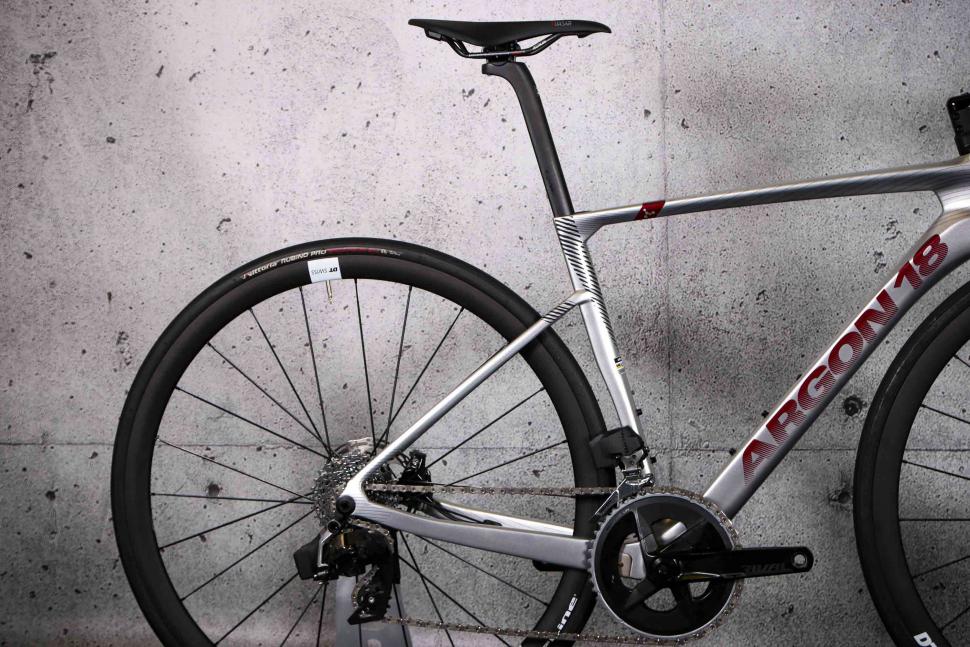
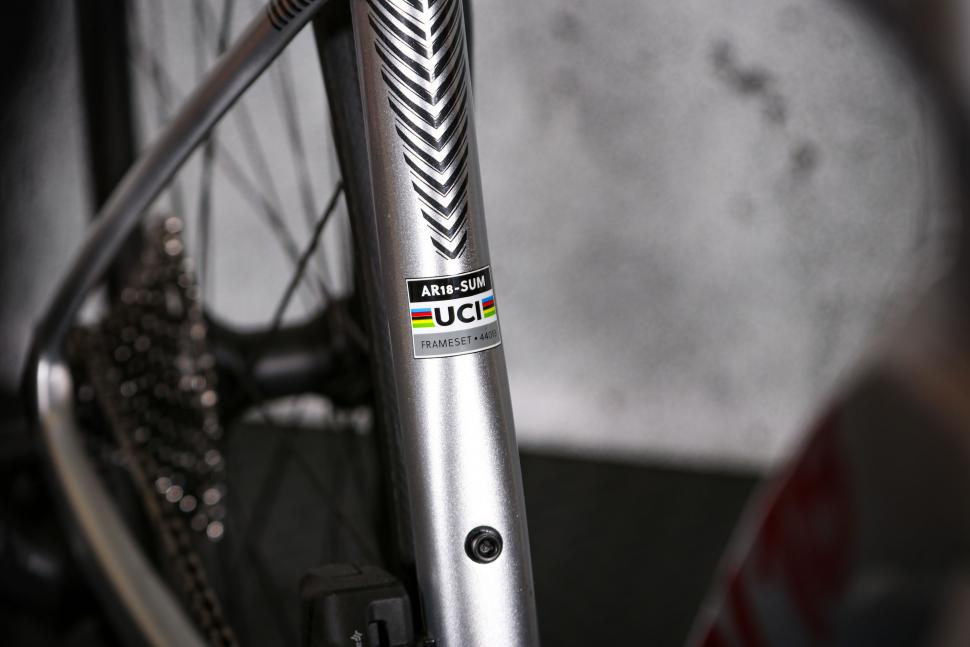
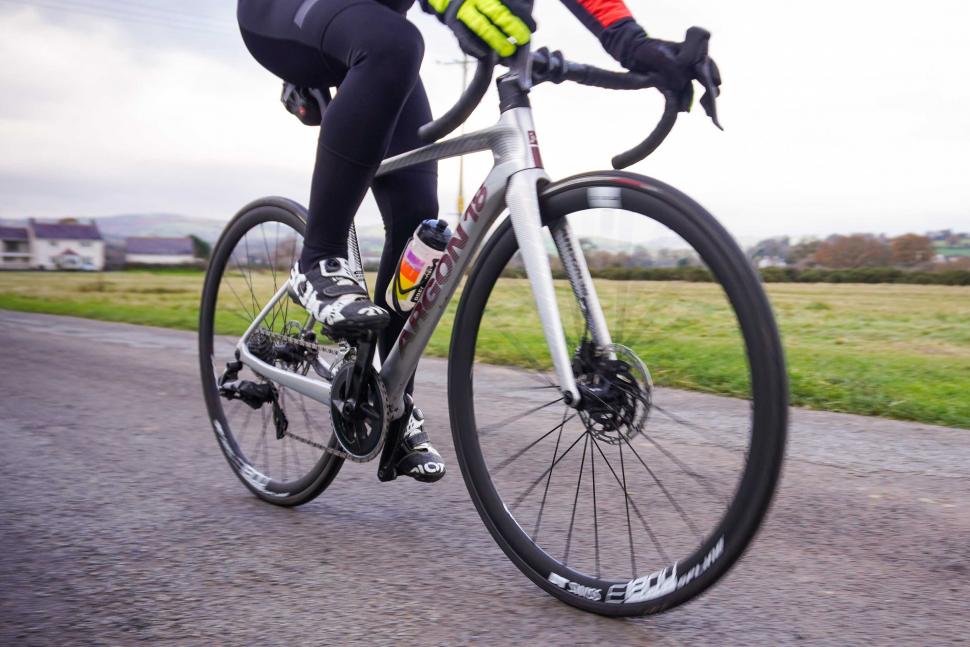
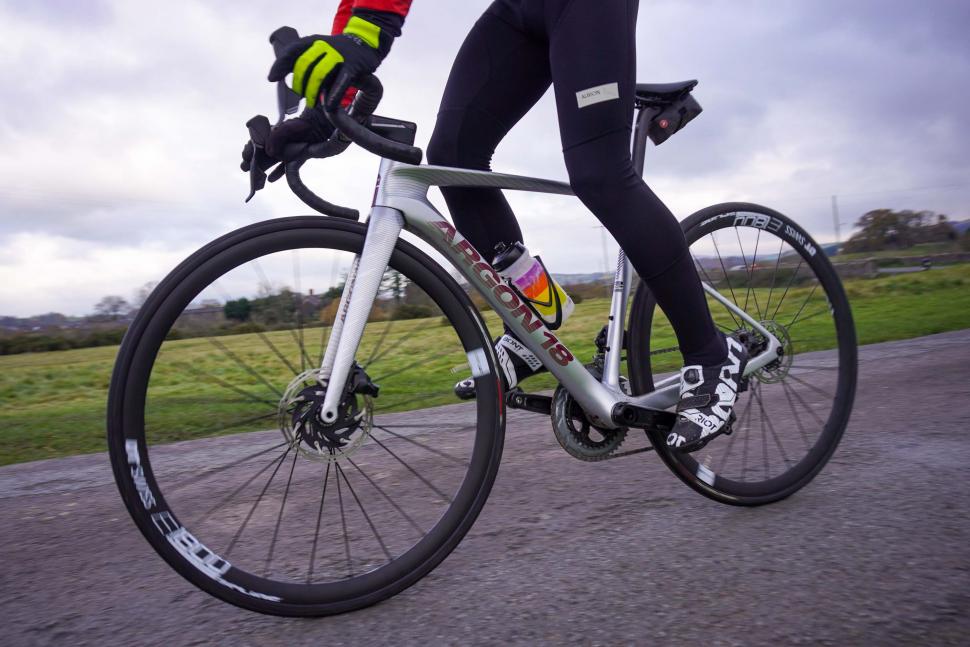
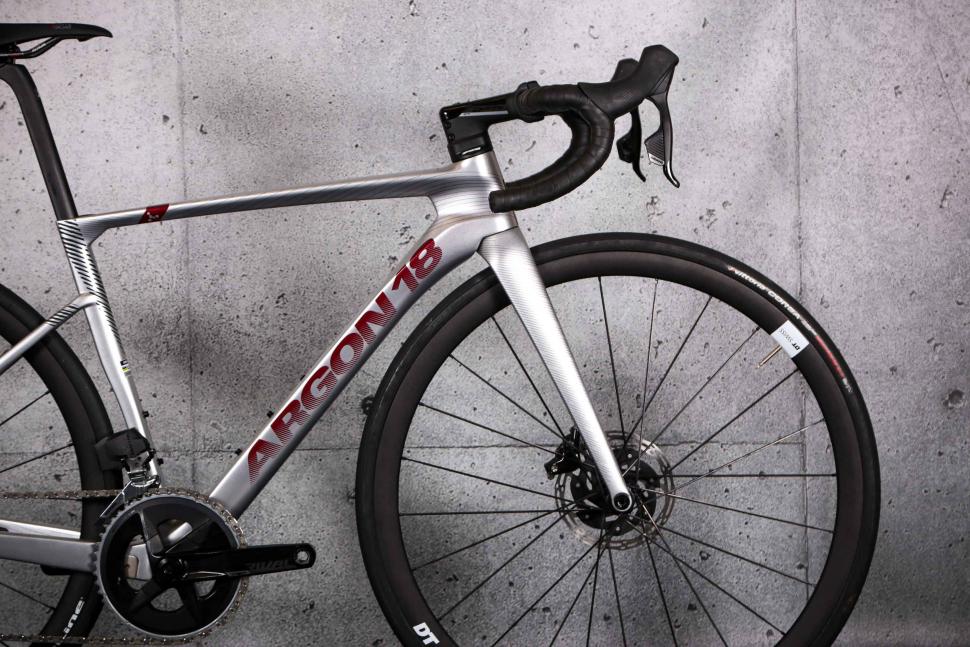
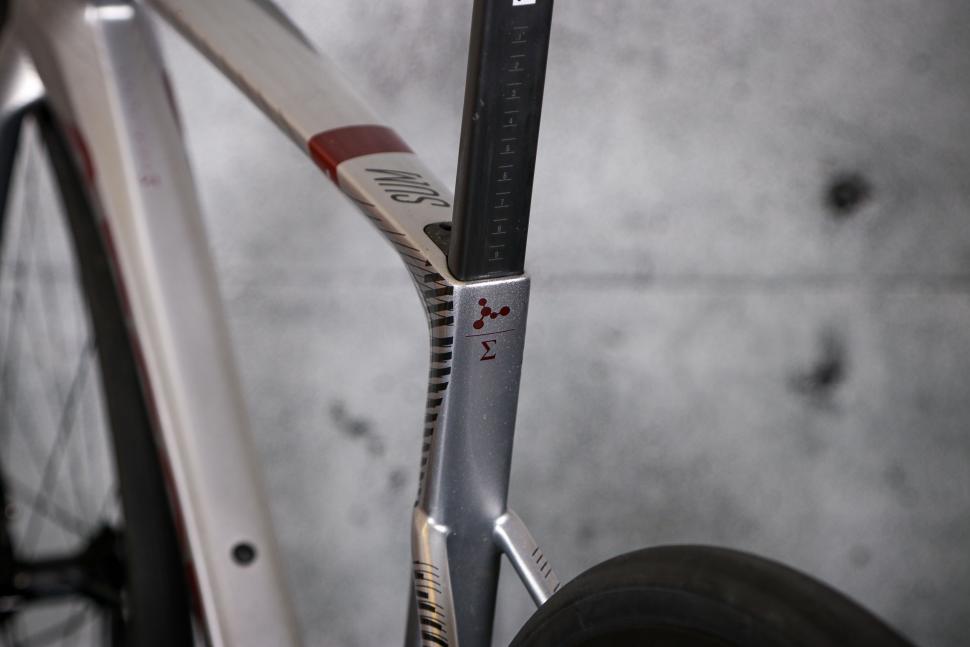









































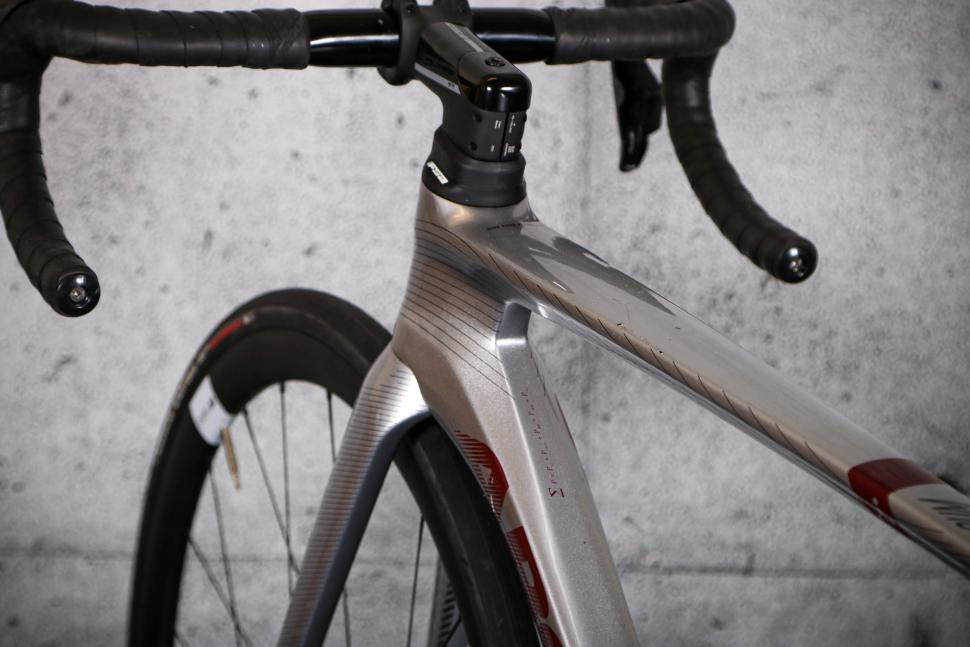
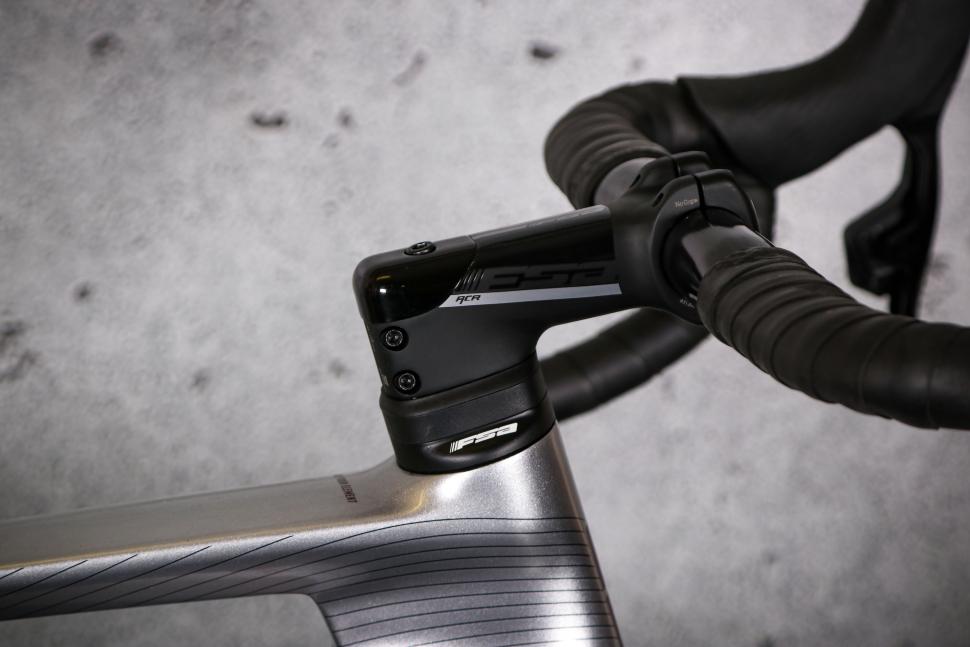

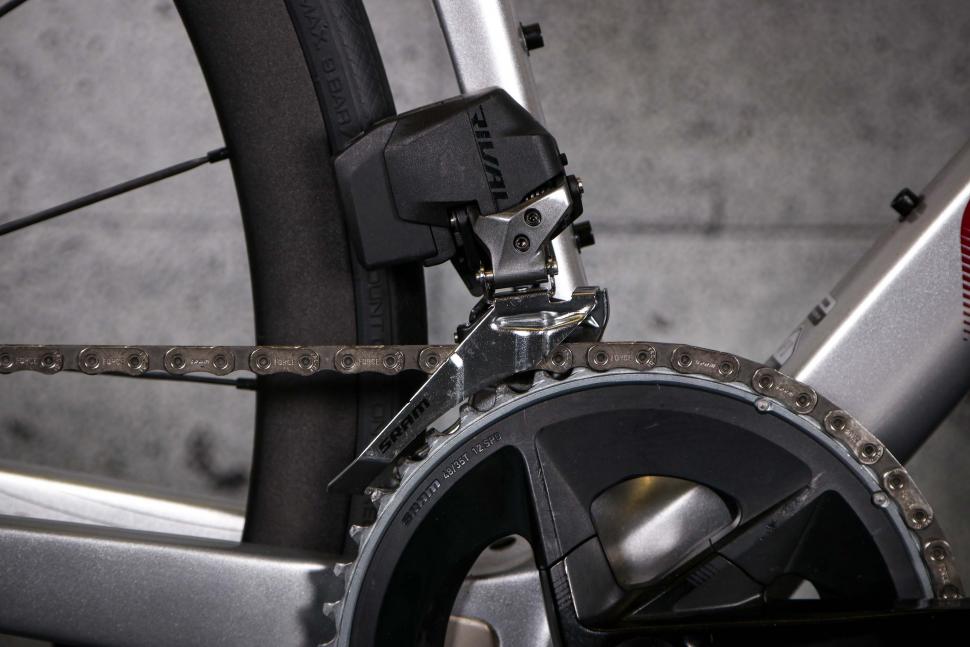

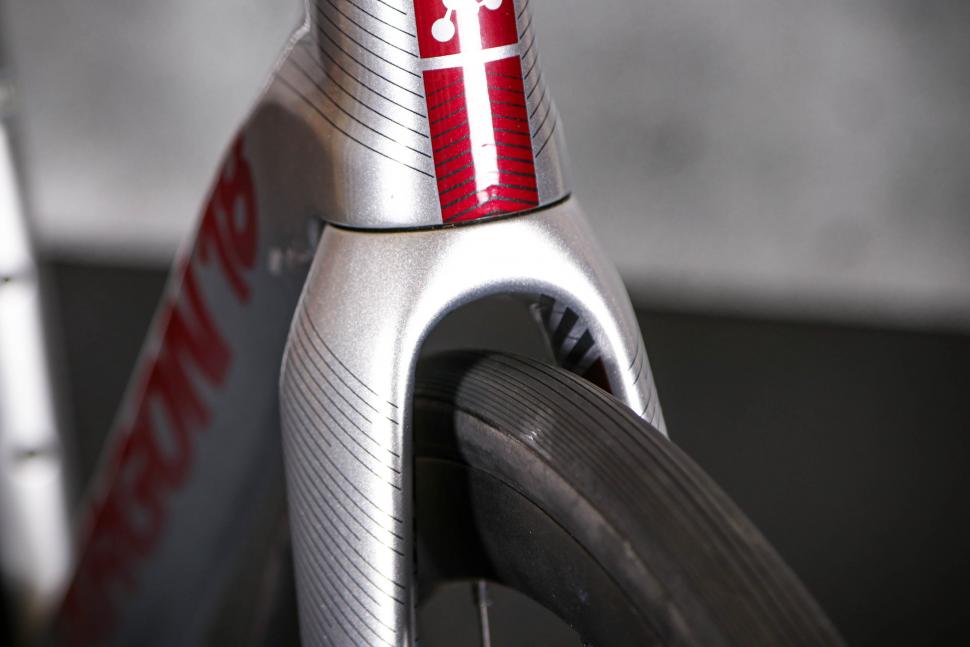
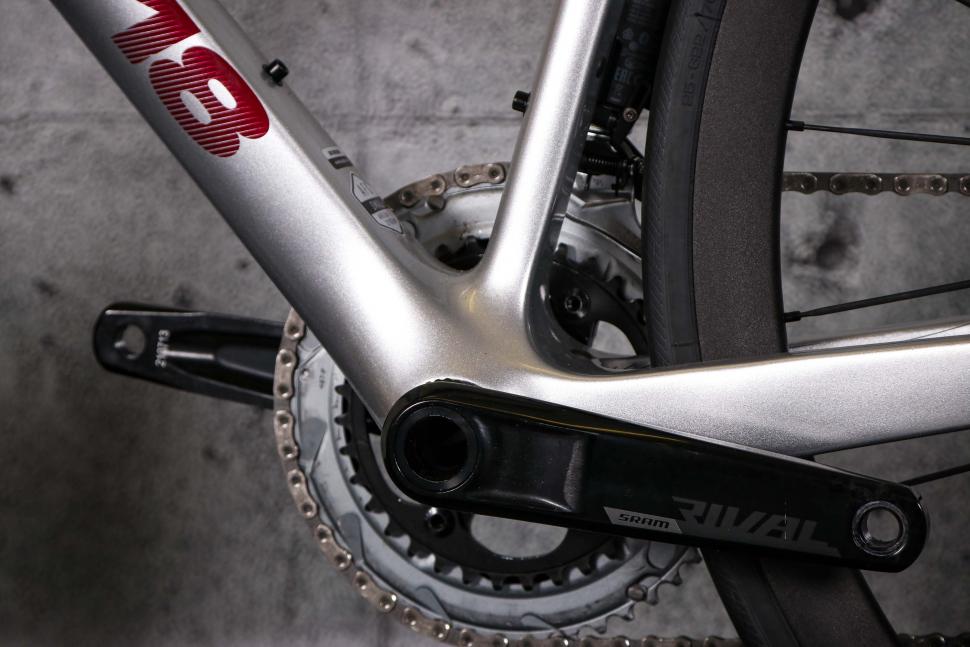

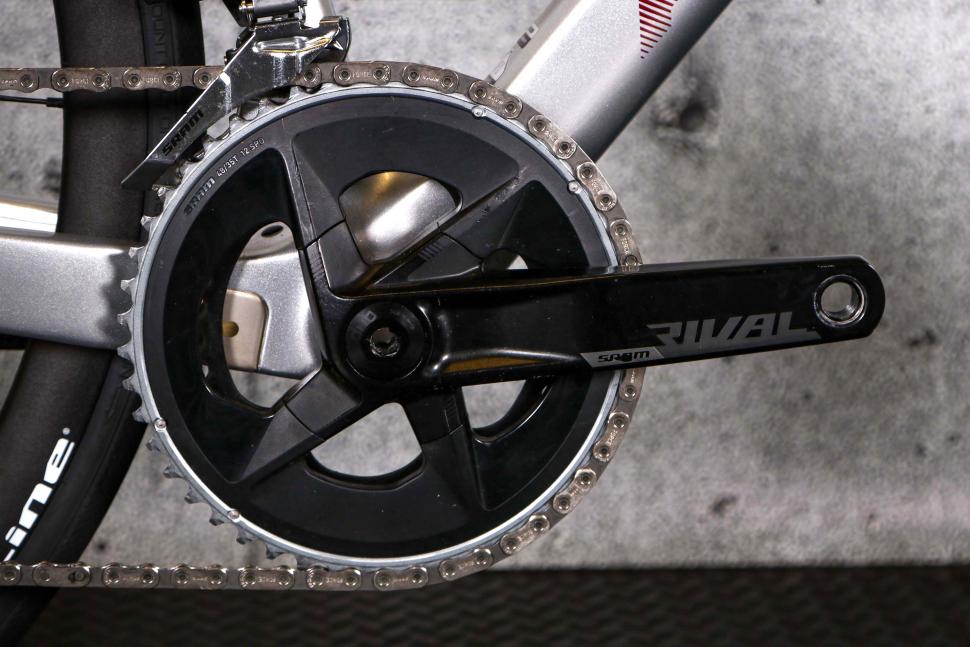
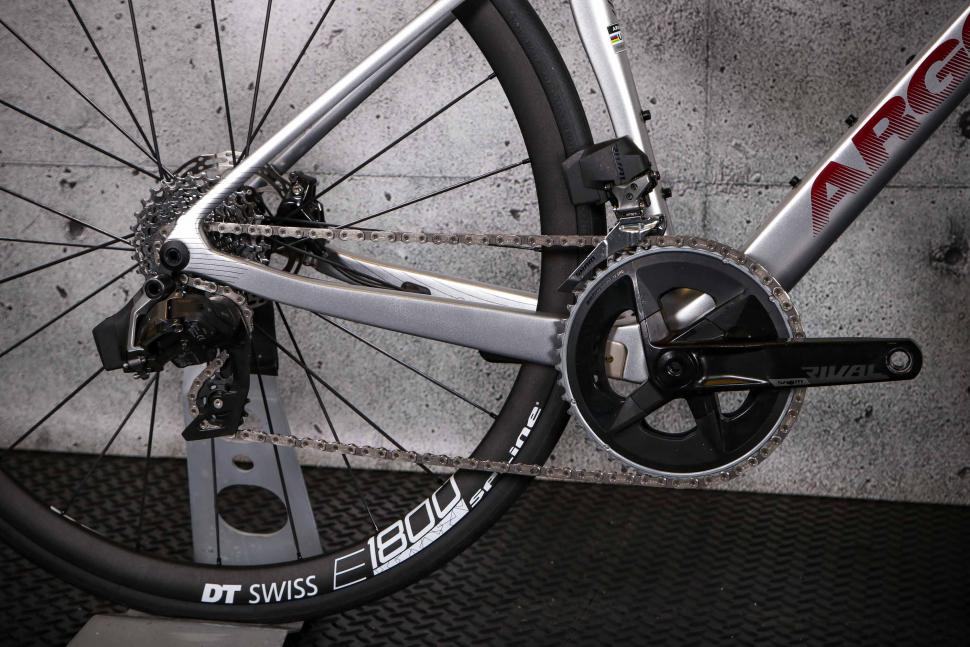
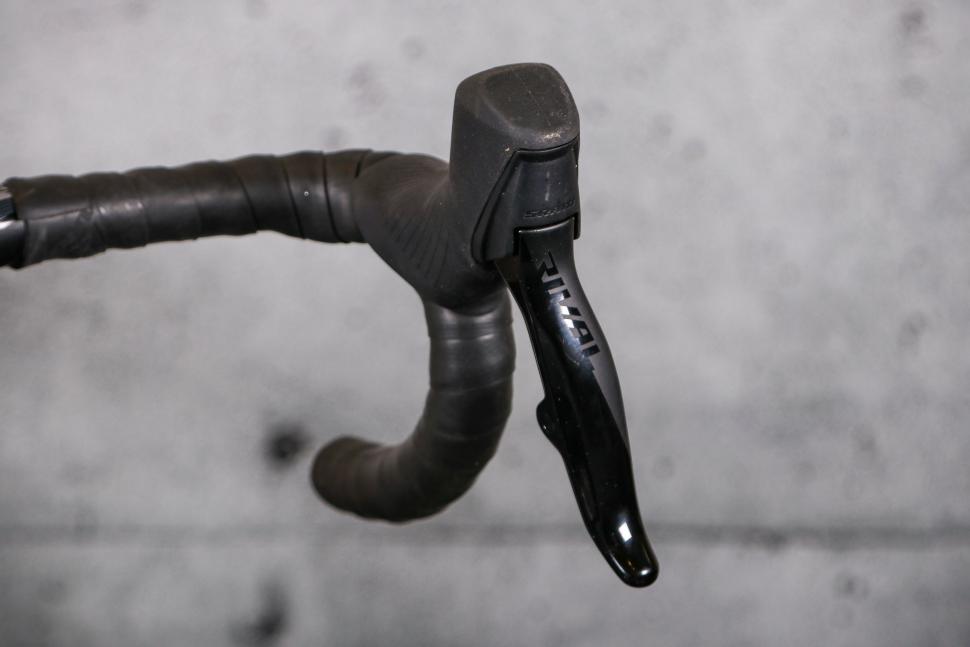
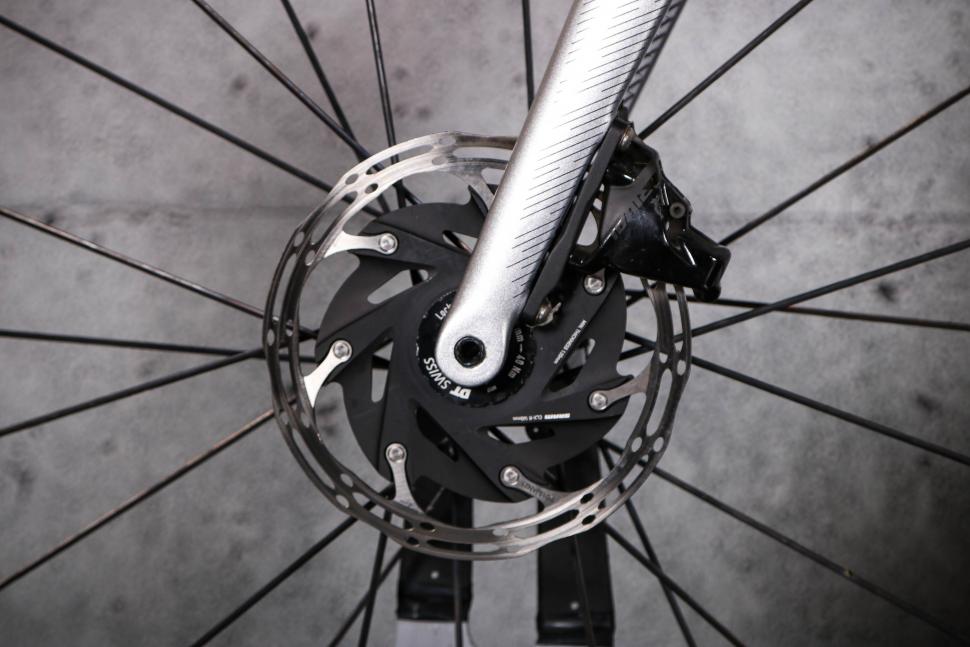
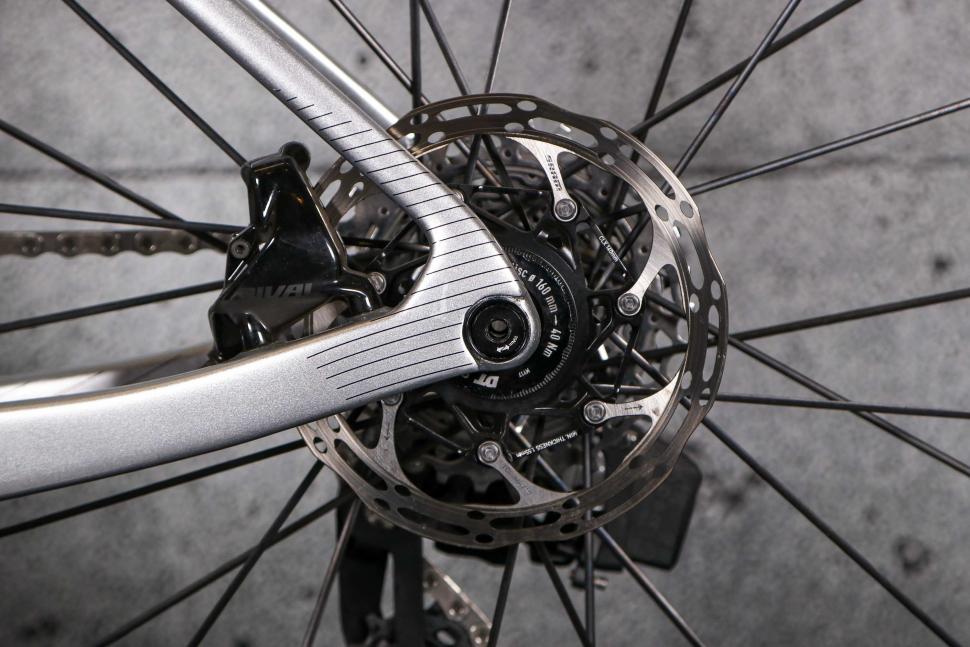
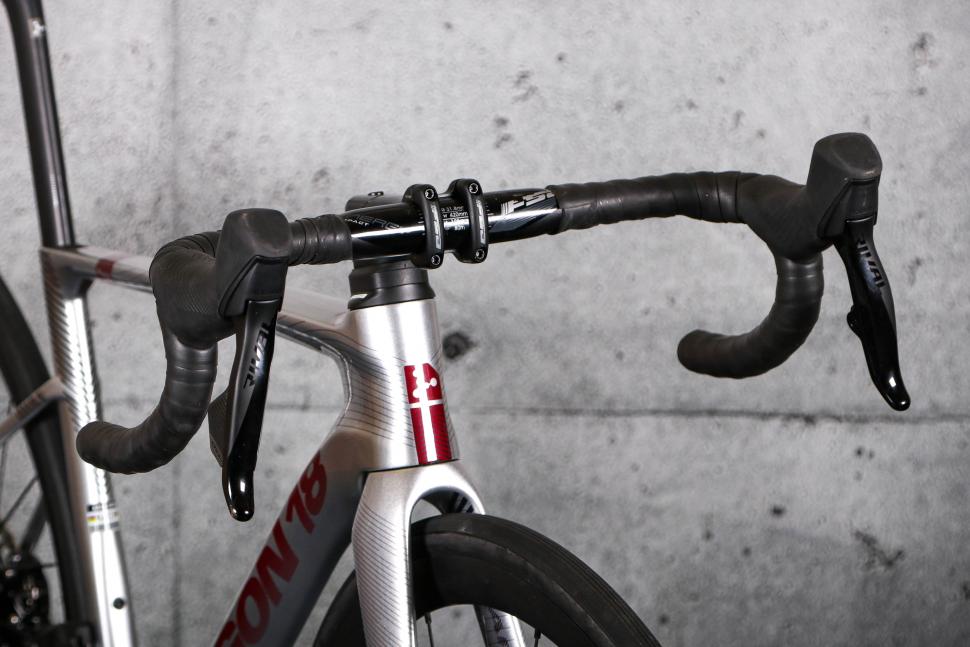
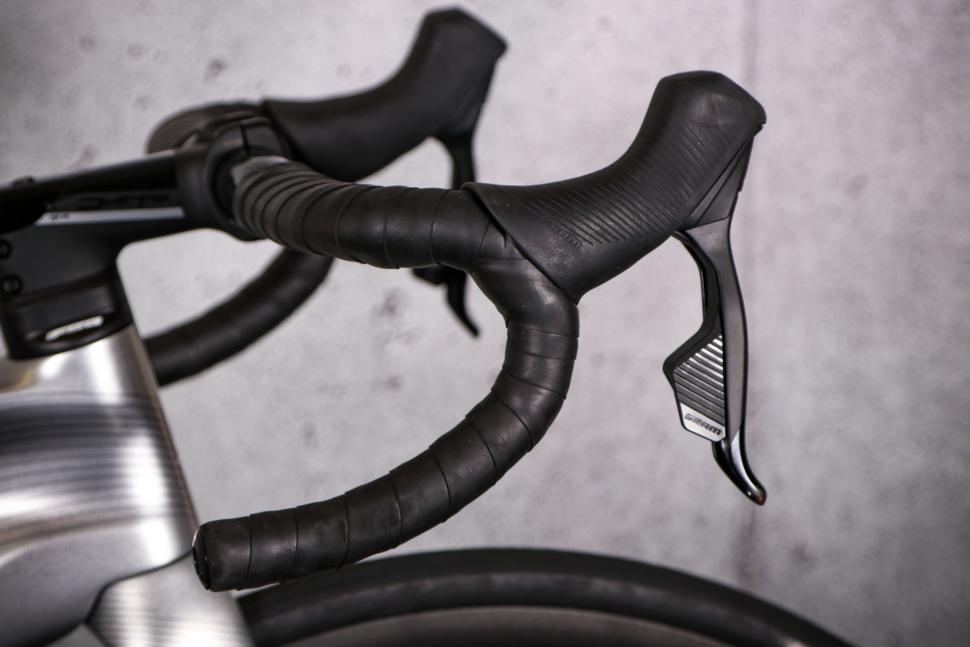

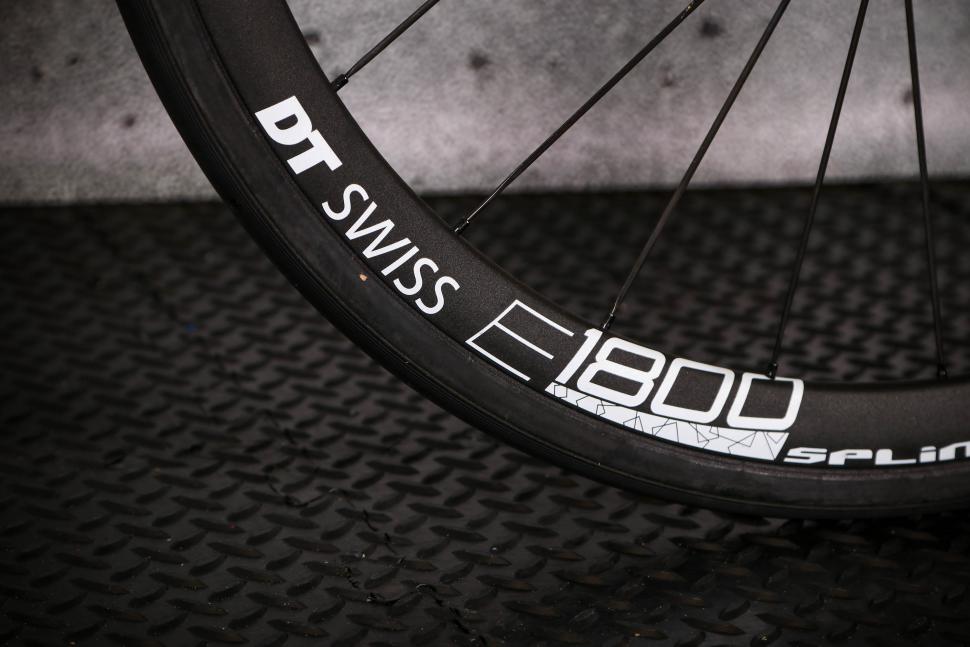
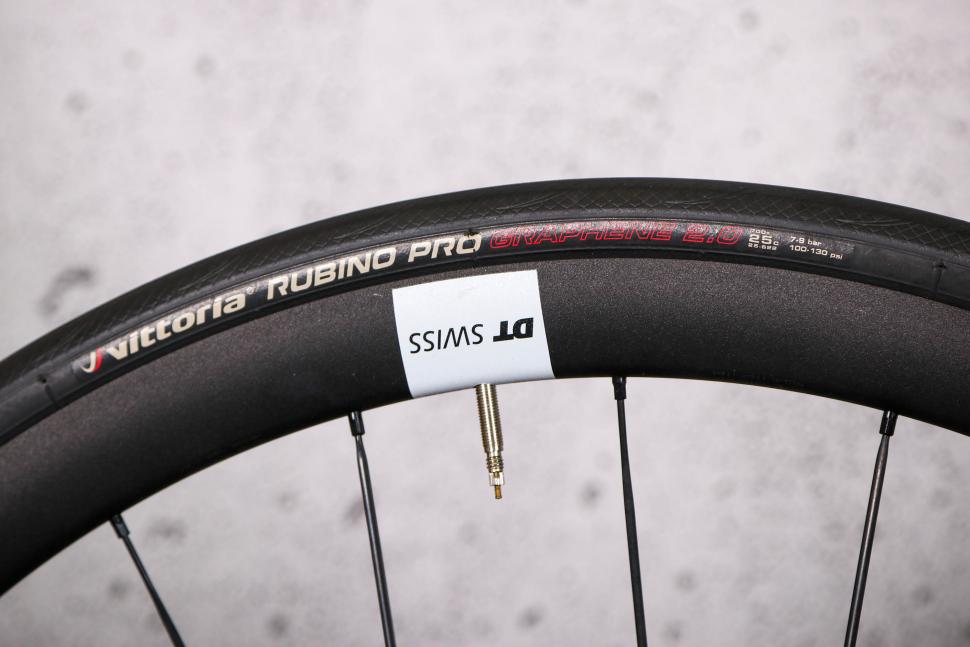



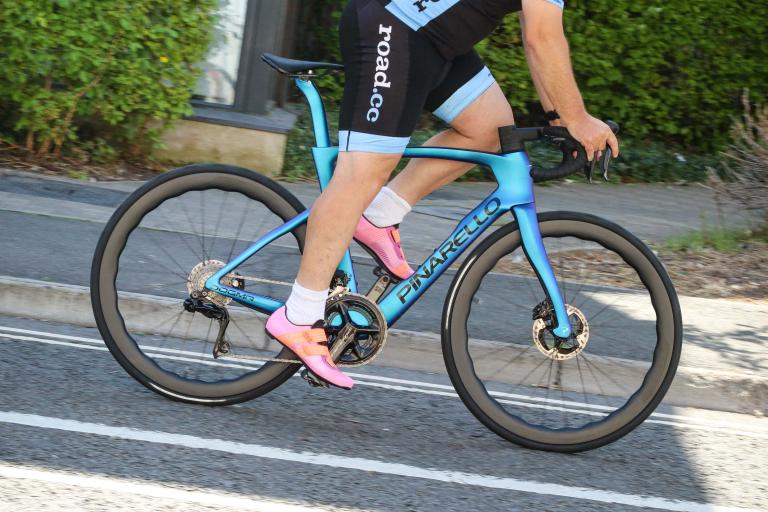
Add new comment
23 comments
"The wheels lack the immediate acceleration of a lighter set..."
What utter tosh.
What is tosh about it? A lighter wheelset is very likely to have a lower moment of inertia, which will result in increased acceleration when a torque is applied (via pedalling). If you can't tell the difference between a light wheelset and a heavy one, you're probably not the target market, but that doesn't mean you can argue the physics involved.
Out of interest- got a reference to that physics? With workings and assumptions?
Sure. https://en.m.wikipedia.org/wiki/List_of_moments_of_inertia
A wheel can be approximated as a solid disc, or more accurately as 3 separate annuluses (annuli? I'm an engineer, not a worderer) for the hub, spokes and rim/tyre/tube. You could very accurately model the wheel in 3d design software, or perform some measurements on a physical wheel to determine its moment of inertia.
As shown in the wiki page, moment of inertia increases as the mass of a wheel increases. For a disc I = 1/2 m * r2, so inertia increases linearly with mass (double the mass, double the inertia). With a wheel, it's a bit more complicated - changing the mass at the hub doesn't make a massive difference but changing it at the rim makes a large difference because of the distance between the centre of mass/rotation of the system and the mass added/removed.
The relationship between torque and angular acceleration is T = I * a, where T is torque, I is moment of inertia and a is angular acceleration. This can be rearranged to a = T/I.
So ways to increase angular acceleration are to increase torque or decrease moment of inertia. I.e pedal harder or make the wheel lighter.
And by the way, water is wet. But no, I won't show my workings for that one.
That's what I'd be interested in seeing as I thought that water can only make something else wet. Does water make itself wet? Are fish wet all the time or only when they get taken out of water? And what about ice, is that wet?
I think ice itself is dry, but there is nearly always a thin layer of water on the outside of it, making it wet.
But that could be a load of rubbish.
A lot of assumptions being made about the temperature of said water...
...And pressure? And composition. Or is it "water" in the layman's sense?
I think we can assume that water generally means liquid water. However, does that mean that super-cooled water can have negative wetness? As soon as it touches something, it'll turn to ice and possibly freeze any wetness that is already there.
All good questions. I'm not sure if that should be answered by a physicist, a chemist, a biologist, a polymath, a philosopher, or maybe even a priest.
If only Rakia were still around. I'm sure they'd give an authoritative answer with the usual confidence and supporting information
Depends - is it dry ice?
All of this is true, but the question is how does the angular momentum of a 1500g wheelset, comopare to the momentum of an 80kg rider on an 8kg bike?
While the wheel weight saving might reduce the energy for the wheels by 25%, is it really going to be significant against the entire bike and rider?
Because I don't really care how quickly I can spin the wheels up on the workstand.
Define "significant". Is it significant enough for me to spend extra dough on lighter wheels? Not even close. Cutting down on the chips would have a much larger impact in my case (but I'm still not gonna!). Is it significant enough that I believe that a cycling journalist can tell the difference? Absolutely.
As an engineer, you will (hopefully) understand that inertial forces are a function of acceleration. Even in high-level bike racing, this peak acceleration is about 0.1 to 0.2 g’s and is generally only seen when beginning from an initial velocity of 0. A (say) 300g difference in wheels, even if this mass is out at the rim, is so small compared to your body mass that the differences in wheel inertia will be imperceptible. Wheel aerodynamics are the most important factor in determining performance, distantly followed by wheel mass.
Overall, wheels account for almost 10% of the total power required to race your bike and the dominant factor in wheel performance is aerodynamics. Wheel mass is a second order effect (nearly 10 times less significant) and wheel inertia is a third order effect (nearly 100 times less significant).
Hope this helps!
Yes I do understand all that, thank you. I don't personally bother with the lightest wheels. The difference it would have on my cycling is less than negligible. But it does have a noticeable (by which I mean not significant but also not imperceptible) difference in acceleration. Because the wheels essentially act as flywheels. And in the world of pro cycling every marginal gain is important.
So to sum up: not tosh.
PS: "inertial forces"? Inertia is a function of mass and shape. There it's no such thing as an inertial force.
Loving this pedantry! Like https://xkcd.com/123/
Pricey and lardy! Good job Argon!
Well, by making it heavy they reduce the price per kilo quite nicely, there's no denying that!
Whilst I personally wouldn't pay >5 grand for an 8kg bike, to be fair, the model tested is rival spec (105 in Shimano speak), and the 8.14kg quoted is on a par with it's 'er rivals (sorry). eg the highly regarded Scott Foil in Rival spec comes in a tad heavier at 8.35kg (and being Scott, a tad pricier).
Although Boardman have proved that it's possible to sell a very capable bike with mid-range electronic groupset and hydraulic disc brakes coming in at 8.1kg and £2800. The Boardman SLR 9.4 looks to be a bargain in comparison.
I should be slightly fairer to Argon. I dont believe its outrageously priced for the brand and what it see as its competitors.
It has been my observation that they see themselves as a halo brand - much like a lot of Italian manufacturers.
Its also worth mentioning that Shimano Mechanical or even 11 speed Di2 would produce a much lighter bike.
I reckon you could probably lose more than 500g and still spend less than the retail price and thats with some fairly deep section rims.
I agree, but I think for that price & spec, you'd have to be a very loyal Argon 18 fan to buy. I can't talk about value for money over brand though, as I have what friends have described as the Specialized demo fleet in my garage.